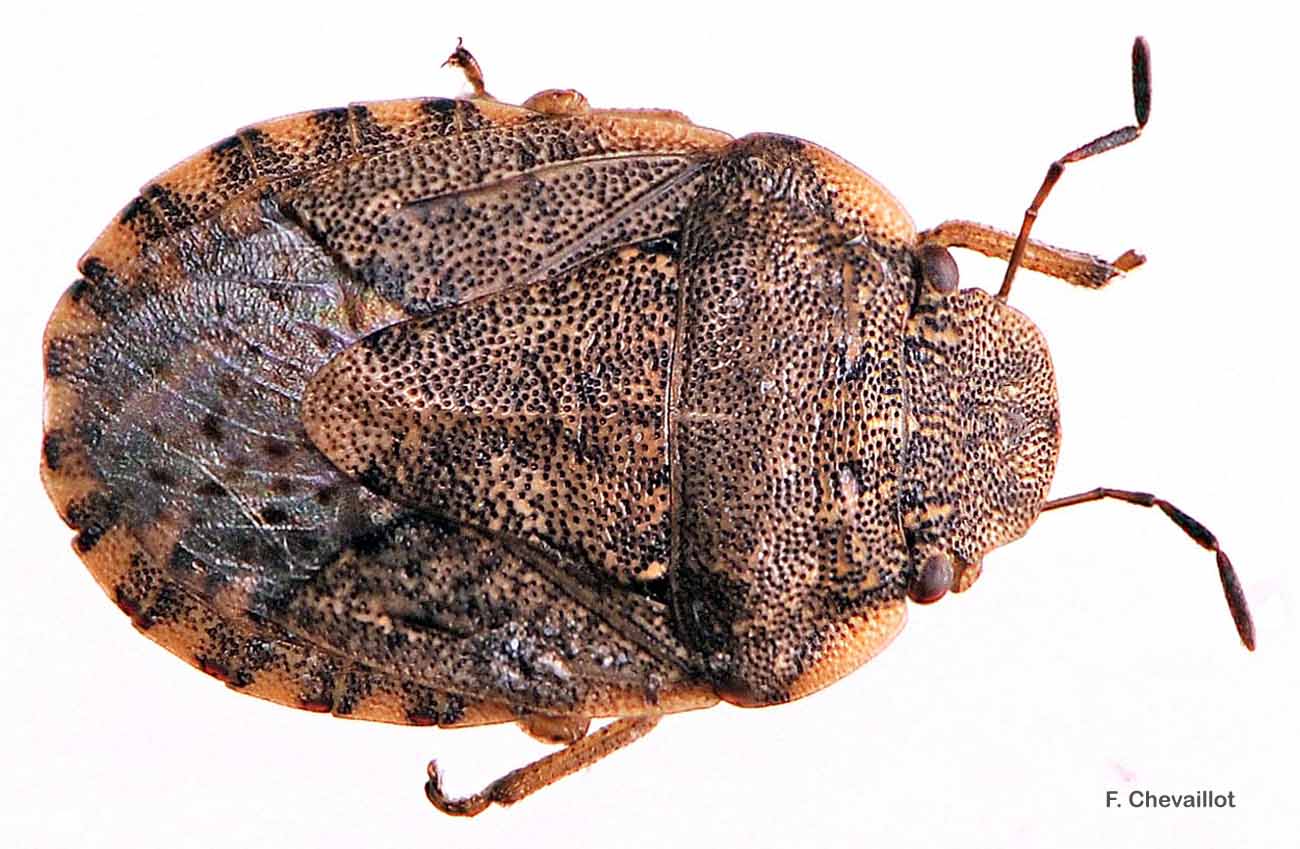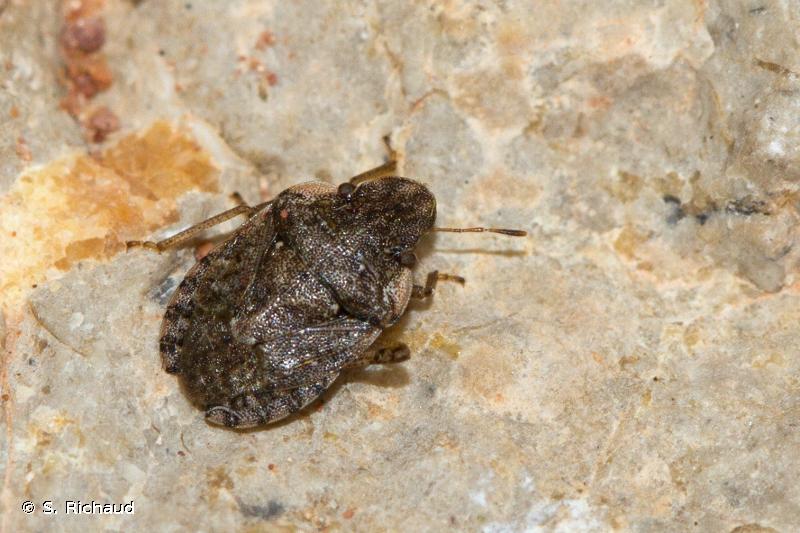
cd_nom

| Author : F. Chevaillot |
 |
To get the picture, please visit:
Fred CHEVAILLOT
Moulin de Castor
La Maynobe
12550 COUPIAC
06 51 19 18 32
09 88 28 31 26
www.insecte.org
email : fred.chevaillot@wanadoo.fr
Any reuse of one or more photographs on this site is subject to an authorization request from the author.
Link to the Code of Intellectual Property (Legifrance)

| Author : S. Richaud |
 |
To get the picture, please visit:
Sonia Richaud
email : inpn@mnhn.fr
Despite the Creative Commons license, please inform the author of the use which will be made of his photo

| Author : Cochard Pierre-Olivier |
 |
Despite the Creative Commons license, please inform the author of the use which will be made of his photo

| Author : S. Richaud |
 |
To get the picture, please visit:
Sonia Richaud
email : inpn@mnhn.fr
Despite the Creative Commons license, please inform the author of the use which will be made of his photo
Taille : 4,3 – 6 mm
Diagnose :
Petite punaise brunâtre allongée avec les bords de la tête et du pronotum aplatis en lamelles, et non rebordés. Corps aplati dorso‐ventralement. Tête large et courte, 1,4 à 1,6 fois plus large que longue, à bords latéraux convergents en avant des yeux qui ne sont pas pédonculés. Ses membranes alaires portent des taches noires de forme arrondie. Sa face dorsale est densément ponctuée de points noirs ou bruns sauf dans les angles antérieurs du pronotum où ils sont plus clairs.
Détermination : Moyennement difficile.
Espèces proches :
On distingue cette espèce des autres Sciocoris car elle a ses angles antérieurs du pronotum nettement éclaircis et contrastés par rapport au reste du corps, et des petites taches noires couvrant la membrane. Elle est proche de Sciocoris sideritidis qui a la tête nettement plus allongée et étroite seulement 1 à 1,4 fois plus large que longue et dont les bords sont quasi-parallèles devant les yeux.
Période d'observation :
Mars à octobre, avec un pic important en juin.
Biologie-éthologie :
Espèce relativement polyphage qui vit sur différents genres de plantes vivaces comme le romarin, les thyms, les phlomis, également sur le phagnalon, les immortelles, les seneçons, et sur les oyats et différentes graminées.
Biogéographie et écologie :
Espèce méditerranéo-atlantique, présente à l'est jusqu'en Iran et Azerbaïdjan. Elle est le plus souvent rencontrée proche des côtes. Assez peu exigeante écologiquement, elle colonise des milieux chauds et secs : garrigues, maquis, friches, bords des chemins, dunes et arrière dunes, pinèdes, fourrés, pelouses fleuries riches en graminées et buissons vivaces. Elle est commune dans la zone méditerranéenne, plus rare en dehors.
Roland Lupoli (),2020
Continental
Metropolitan France
Overseas
Marine
Metropolitan France
Overseas
The map presents a summary at the 10 x 10 km grid of the observation data for the species transmitted to the SINP. These data have been subjected to validation filters.
The map presents a reference distribution layer of the species at the scale of departments and marine sectors. The presence and absence data were established by expertise within a network of partners. This reference distribution is used in the validation process of the SINP data at the INPN level.
Corresponds to a report on the basis of at least one observation proved within a period of 10 years (20 years for little-known invertebrates) preceding the year and no presumption of extinction since obtaining the last data nor doubt on reproductive and implemented nature of this population. For migratory species, the presence indicated concerns areas of reproduction.
This status is based on one or more of the following criteria:
This point covers the absence, more difficult by nature to demonstrate than presence. This status is based on one or more of the following criteria:
This status must be assigned to a department in which the presence of the species is casual.
Particular case of absence due to a proven extinction less than a half century ago (older disappearances are treated as "no probable or definite").
In the state of knowledge, we can not comment on the presence or absence in the current department. This is the default status when not comprised in one of the previous categories or whenever there is doubt.
The map shows the global distribution of the species based on GBIF data (Global Biodiversity Information Facility).
